As we enter 2025, here are some automation testing trends I think will significantly shape the future of software testing.
My analysis for this post integrates data from hundreds of interviews and a comprehensive automation testing survey spanning 2018-2025, with an average of 200 responses per year, revealing considerable shifts in testing priorities and persistent challenges.
This data, combined with insights from thousands of webinar participants throughout 2024, provides a clear view into where our industry is heading.
With that in mind, I’ve compiled my list of the top automation testing trends for 2025 using the above criteria, just like I’ve been doing for the past 14 years.
INDEX
Agentic AI: The Next Wave in Testing
I believe 2025 will witness a continued expansion of AI-assisted testing.
Why?
The rise of AI in testing has been exponential, with survey data revealing 72.3% of teams actively exploring or adopting AI-driven testing workflows by 2024, compared to early-stage adoption just a few years ago.
This trend signals one of the fastest adoption curves in the history of our TestGuild automation testing survey.
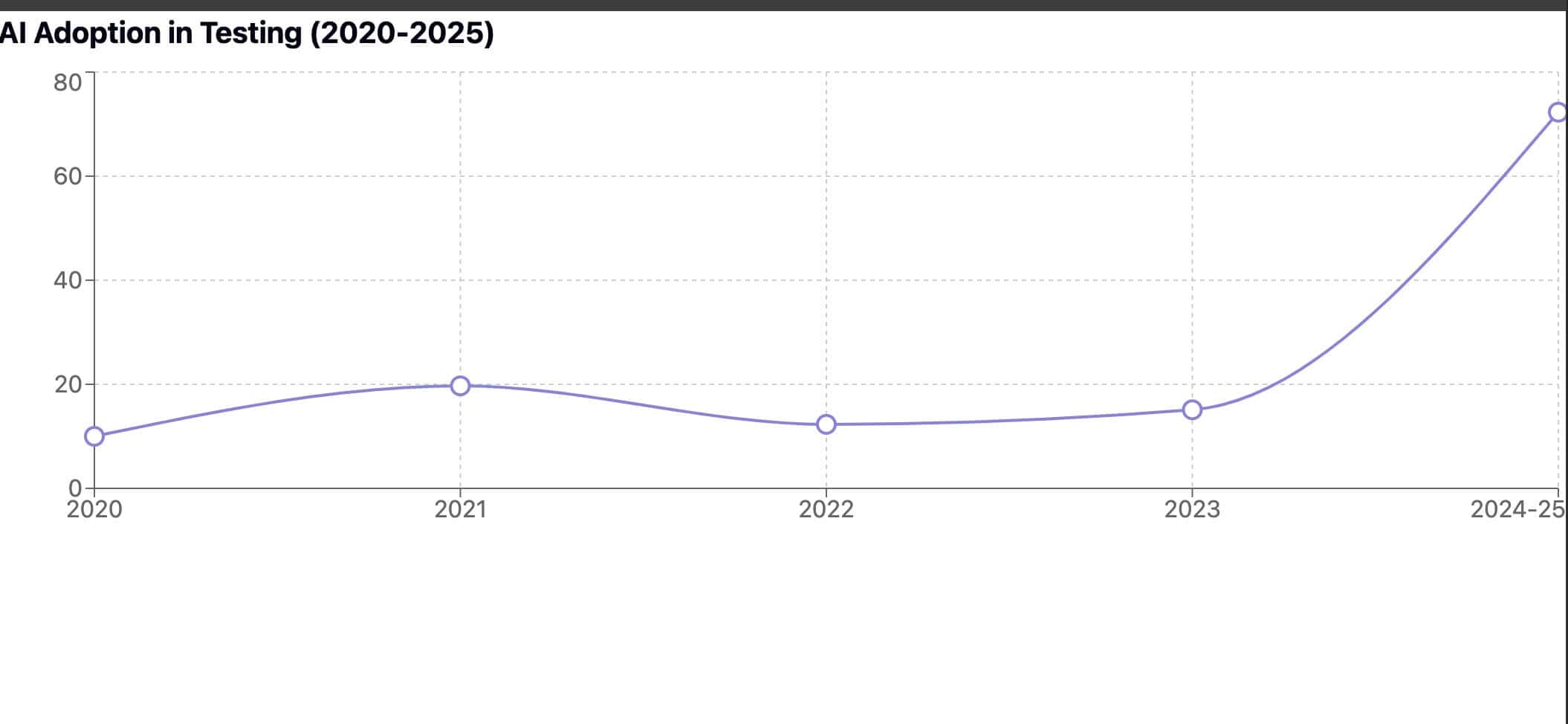
Building on 2024's multimodal AI (which uses multiple data types processed via specialized algorithms), the emerging trend is Agentic AI.
But first you might be asking what what is Agentic AI?
Well, these systems operate autonomously, handling tasks previously requiring human intervention. They communicate, maintain long-term states, and make independent decisions based on interactions, effectively acting as a team of highly capable testing assistants.
Still not clear? Let's try and example.
Agentic AI Automation Testing Workflow Example
Let's imagine a real-world example of applying Agentic AI to automation testing, involving an AI agent autonomously managing the entire regression testing suite for a large e-commerce platform.
Instead of relying on pre-scripted tests and rigid schedules, this Agentic AI system would perform the following actions:
- Prioritization: The agent analyzes recent code changes and feature releases, prioritizing regression tests based on the risk associated with each modification.
- Test Selection and Adaptation: The agent dynamically selects the appropriate tests, choosing a subset of the complete suite based on its risk assessment.
- Test Execution and Environment Management: The agent schedules and executes the selected tests across various environments (e.g., different browsers, operating systems, devices). If a test fails, the agent might automatically trigger additional diagnostic tests to gather more detailed information about the failure's cause or even try to fix trivial issues automatically.
- Result Analysis and Reporting: The agent analyzes test results, classifying failures based on severity and identifying patterns. The agent might even suggest bug fixes based on its analysis of common error patterns.
- Feedback Loop and Continuous Improvement: The agent continuously learns from its experiences and refines itself.
This hypothetical scenario isn't as far-fetched as it might seem.
The data in our surveys shows a clear trajectory toward teams not just automating tasks but also relying on AI to make decisions autonomously, which is at the core of Agentic AI Automation:
- Decision-Making: AI tools are increasingly being trusted to optimize test coverage and maintenance.
- Autonomy: Interest in AI-driven pipelines and frameworks indicates teams want solutions that operate with minimal manual intervention.
- Performance: The focus on tools and frameworks that use AI highlights a shift toward systems that learn and adapt dynamically.
The transformation is happening faster than many based on webinar polling since 56% of teams are already in the “investigating” phase of AI adoption and with many companies are motivated to use more AI since 38% see AI as a solution for tester shortages.
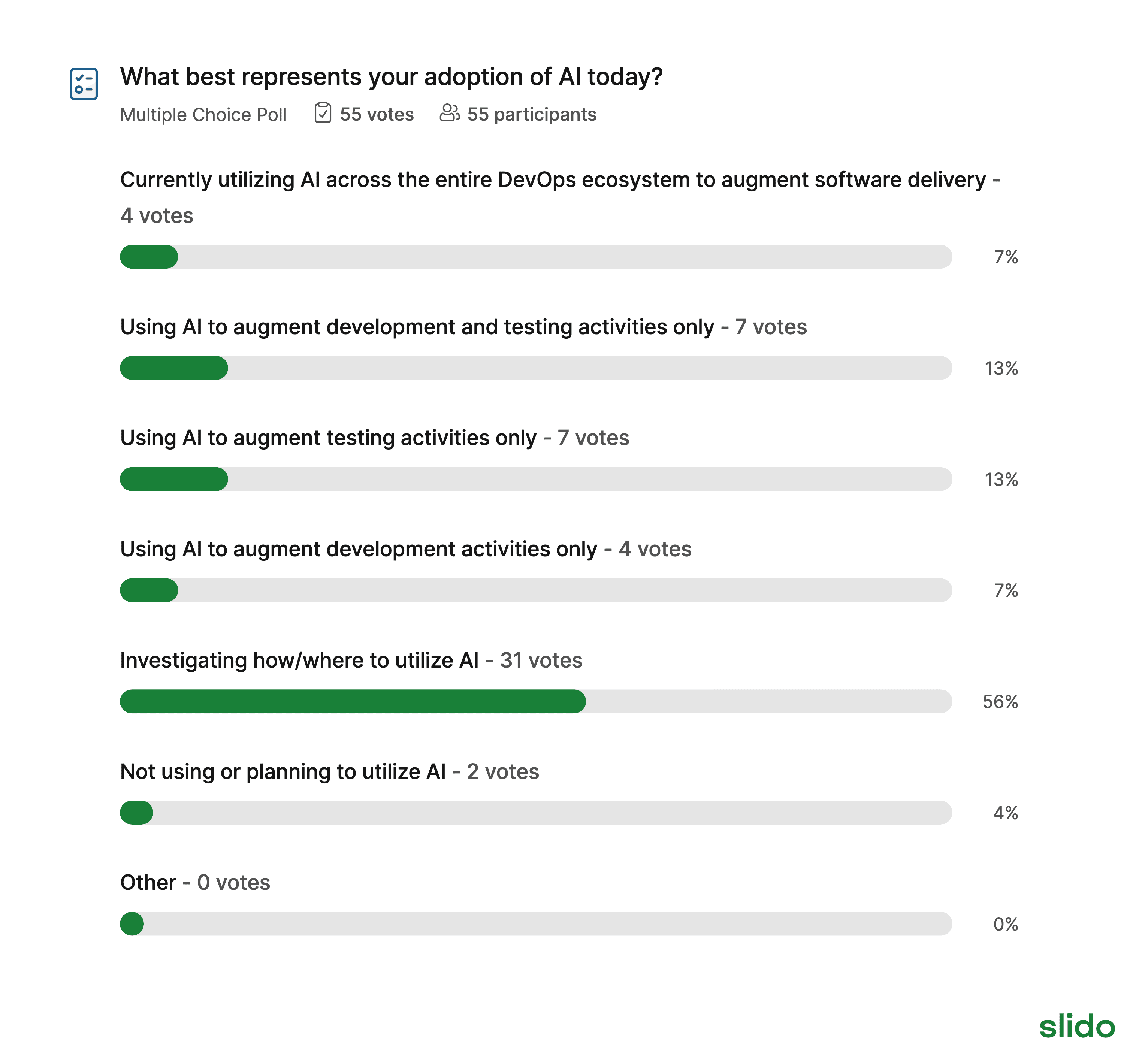
I’ve also heard from many automations testing expert over 2024 confirming my Agentic AI prediction.
Most notably Jonathan Wright and Jason Arbon on a recent TestGuild webinar both mentioning the transformative potential of agentic AI and how they are set to redefine testing paradigms.
But is this all just “Marketing Vendor” speak?
No, i don't think so.
Also, big names in the industry are saying the same think (I’m just extrapolating it to automation testing)
In his recent remarks, Microsoft CEO Satya Nadella described how AI “agents” will take SaaS to the next level by handling complex tasks, learning continuously, and connecting seamlessly across systems.
Similarly, Stanford researchers’ experiments with AI agents that mimic human-like behaviors further underscore the potential of Agentic AI to transform the way testing is conducted.

AI Shift-Right: Understanding the User
Understanding real-world user behavior is becoming essential for quality strategies in 2025.
By analyzing live user interactions, teams can uncover patterns, anticipate issues, and ensure software meets user expectations in production environments.
The integration of AI is enabling teams to explore new ways of improving quality.
Survey data highlights a growing interest in predictive models and user behavior analysis, with teams focusing on leveraging AI to uncover long-tail use cases and better understand user journeys.
Gojko Adzic illustrated this by envisioning tools integrating directly into platforms to provide experience analytics and predictive models, effectively anticipating problems. This is particularly valuable in managing the substantial volume of user data, including long-tail use cases. AI plays a crucial role in uncovering patterns within the data.
This shift-right approach complements traditional shift-left methodologies by emphasizing quality assurance post-deployment.
Some of the potential benefits include:
- A reduction in user-reported issues through proactive monitoring.
- Improved feature adoption by optimizing high-value user flows.
- Enhanced test coverage through data-driven decisions based on real-world usage patterns.
Looking Ahead: The Moonshot Vision for 2025
The next generation of AI-powered tools, like the beta platform saola.ai, offers a glimpse of what’s possible when testing shifts focus to real-world conditions.
Here’s how these tools could transform testing:
- AI Models Using Snapshots: Instead of relying on selectors that are prone to changes, AI captures snapshots of user sessions, ensuring stability and adaptability over time.
- Real User Behavior Analysis: Tests are generated based on live user data, autonomously identifying business flows and covering both positive and negative cases.
- Zero Test Maintenance: By learning continuously from user interactions, these tools eliminate manual test updates, a major pain point for QA teams.
- Shift-Right Production Testing: Combining post-deployment monitoring with traditional pre-release testing ensures end-to-end quality by catching overlooked issues.
- Enhanced Test Coverage: Linking code classes to real scenarios allows for dynamic regression testing, focusing on critical paths often missed in conventional testing.
- Practical AI Application: Automated error fixing and precise failure analysis (e.g., API issues) accelerate resolution times and boost developer efficiency.
- Continuous Insights and Monitoring: Real-time global monitoring provides actionable insights, bridging the gap between live performance and testing workflows.
This approach would shift testing into a fully data-driven process, dynamically updating test plans based on actual usage patterns. It ensures tests remain relevant and efficient over time while significantly reducing maintenance overhead.
While some of this may seem like a moonshot, the rise of AI-driven tools indicates that the future of testing will emphasize proactive quality assurance and real-world alignment.
Everyone is QA: Human in the Loop
As we look toward 2025, the adoption of Agentic AI and End-to-End (E2E) Autonomous Quality Platforms (more about this latter) is poised to dramatically change software testing.
This should make testing more accessible than ever, empowering non-technical team members and fostering greater collaboration across roles.
With the rise of low-code and no-code tools no with the aid of AI, testing has begun to break out of its traditional silos.
These tools enable business analysts, developers, and even stakeholders with limited technical expertise to play an active role in quality assurance. Webinar polls revealed that 74% of participants identified as beginners in AI, emphasizing the demand for tools that lower the barrier to entry.
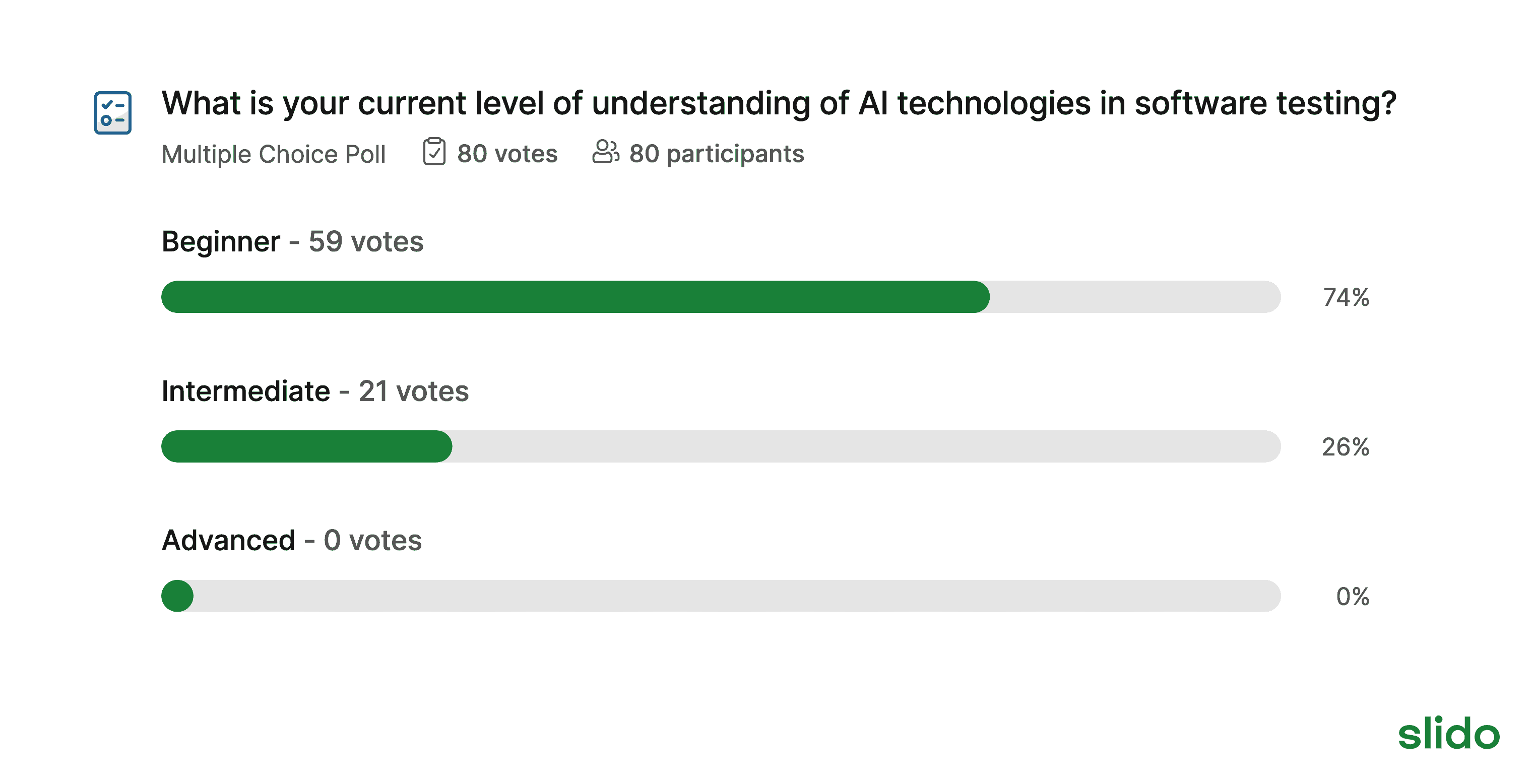
Intuitive, low-code solutions are leveling the playing field by automating complex tasks such as test creation and defect detection, allowing a wider range of contributors to participate in QA processes. According to survey data, 32.3% of teams are actively exploring codeless testing solutions, attracted by their ability to reduce the learning curve and accelerate tool adoption.
At the same time, the role of human oversight remains essential.
As Tobias Müller aptly stated, “It's not about trusting artificial intelligence anymore; it's about setting boundaries and trusting what you set.”
Teams that combine human expertise with AI achieve impressive results based on other industry survives that show better defect detection and faster test cycles—showing the importance of blending human judgment with machine efficiency.
Master AI Testing—Join AG 2025
Tester Role Evolution: Adapting to the Future
Testers are transitioning into hybrid roles that blend traditional skills with expertise in AI, DevOps, and automation.
This shift is already underway, as reflected in survey and community data:
- 45% of teams emphasize the need for AI skills.
- 51.8% prioritize DevOps knowledge.
- 72.3% focus on automation expertise.
To stay relevant, testers must embrace continuous learning and collaboration, becoming enablers of quality across their organizations.
Integration with DevOps and SRE: Continuous Quality
The integration of testing with DevOps and Site Reliability Engineering (SRE) practices is one of the most significant automation testing trends for 2025.
As organizations increasingly prioritize continuous delivery and operational resilience, testing is evolving into a proactive, continuous quality effort that is integral to these ecosystems.
Our survey data highlights a remarkable shift, with 51.8% of teams adopting DevOps practices by 2024, up from just 16.9% in 2022.
This growth underscores the increasing alignment of testing with DevOps and SRE workflows to ensure high-quality software delivery at speed.
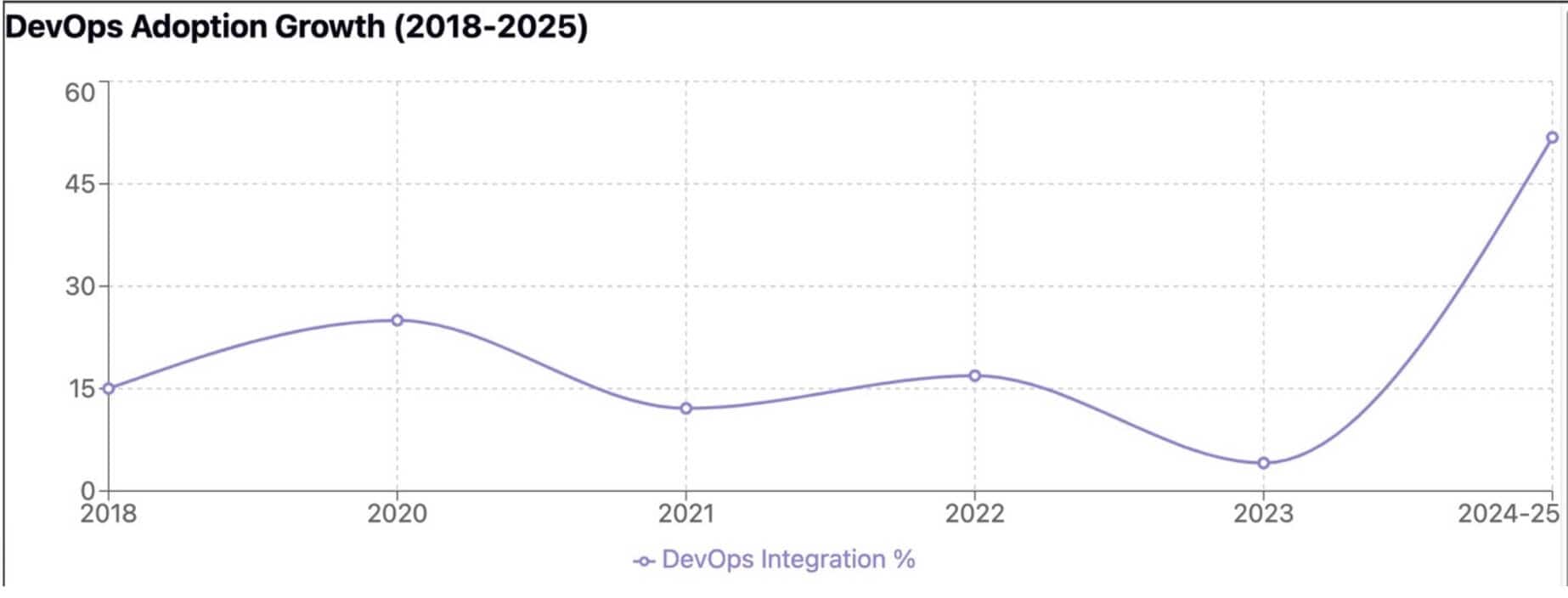
The integration of testing with DevOps and SRE goes beyond traditional quality assurance, transforming it into a continuous activity that enhances the entire software lifecycle.
This approach enables organizations to:
- Accelerate Feedback Loops: Embedding testing in CI/CD pipelines provides immediate insights into issues, reducing resolution times.
- Implement Proactive Quality Assurance: Performance testing and monitoring integrated into workflows allow teams to identify and address potential issues before they impact end-users.
- Foster Improved Collaboration: Shared quality ownership improves communication and alignment among QA, developers, and operations teams.
The data from surveys and polls clearly supports this growing trend.
From pipeline automation to performance monitoring, teams are embracing continuous quality practices that align with the goals of operational excellence.
If your organization hasn’t yet integrated testing into your DevOps or SRE workflows, 2025 is the year to make this transformation.
End-to-End (E2E) Autonomous Quality Platforms
E2E platforms are becoming central to testing strategies.
These platforms combine testing, usability, performance, accessibility, and security into a single framework, addressing broader quality concerns.
By leveraging AI to automate the testing lifecycle, teams report significant improvements in defect detection and enhanced test coverage.
Our survey data shows a significant increase in DevOps integration, growing from 16.9% in 2022 to over 51.8% by 2024. This indicates a clear shift toward unified quality approaches, with E2E platforms becoming central to testing strategies
This isn't just speculation – our surveys show:
- Security testing has surged from 8.2% in 2021 to 39.5% in 2024
- Performance testing now stands at 41% adoption
- API testing has grown from 13.1% in 2021 to 46.2% in 2024
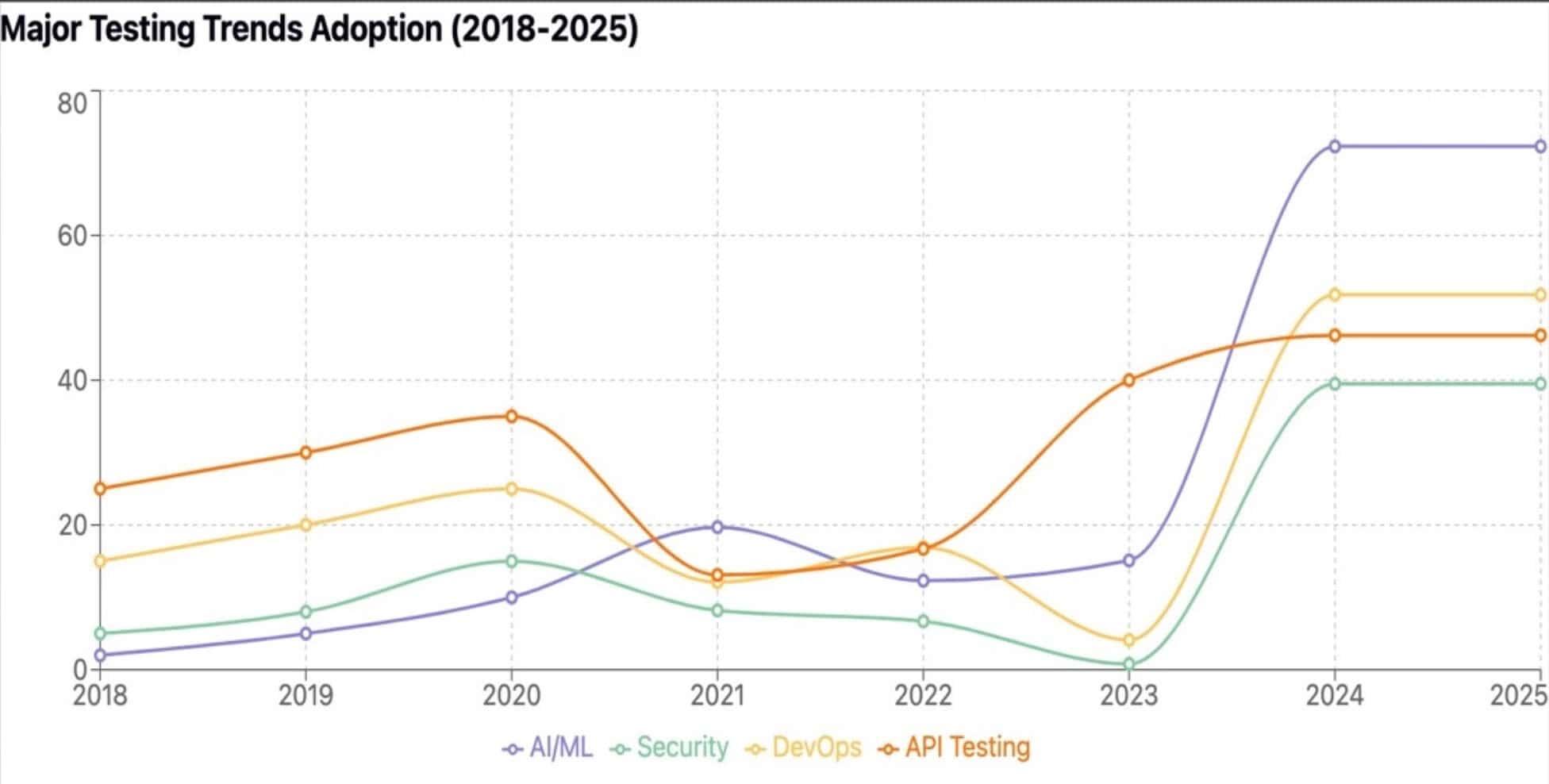
These metrics reflect the growing reliance on comprehensive quality platforms to manage the full spectrum of testing needs.
Playwright: The Leading Automation Tool Choice
As I predicted last year Playwright would become the top choice for many testers. And I was proven correct based on developments I covered in my post Playwright Surpasses Cypress (What’s Next).
What about now?
Playwright continues to cement its position as the leading automation testing tool in 2025, thanks to its unmatched versatility, reliability, and performance.
TestGuild surveys and community feedback from 2024 reflect its remarkable growth, as teams increasingly adopt it for their testing needs.
The trajectory of testing tools highlights a significant shift in preferences (after analyzing results for 2018-2024 here is what I found):

- Playwright: Rapid adoption (45.1% adoption) has positioned it as the fastest-growing automation tool, driven by its robust cross-browser support, API testing capabilities, and streamlined workflows.
- Selenium: Once the market leader, Selenium has seen a decline (Declining to 22.1%) in adoption as teams seek faster, more stable alternatives.
- Cypress: Maintaining its niche in front-end testing, Cypress holds steady (Steady at 14.4%) with a dedicated user base.
Teams using Playwright consistently reported to me:
- Faster test execution, enabling quicker feedback loops and improved development cycles.
- Reduced test flakiness, resulting in more stable and reliable testing outcomes.
Beyond its initial focus on UI browser automation, Playwright has evolved to support API testing and other advanced capabilities, making it a comprehensive solution for modern testing demands.
*Caution: I'm not advocating for one tool over another or saying one is better. The best tool is the tool that works for you and your teams unique situation. Read more about my views on these tools in my post The Top 3 Automation Testing Tools.
Language every Tester Should Learn in 2025
According to the TIOBE Programming Community index Python is the top programming language for the second year in a row.
And this is no surprise to me as Python remains the top programming language for testers in 2025 due to its simplicity, robust libraries, and dominance in AI and machine learning
Its simplicity, powerful libraries, and dominance in AI and machine learning make it the ideal choice for testers in 2025.
Whether you’re a beginner aiming to break into automation or a senior tester looking to future-proof your skills, Python is the language that bridges the gap between today’s challenges and tomorrow’s automation testing possibilities.
How to Succeed with Testing in Automation in 2025
2025 promises to be a pivotal year for software testing, offering unprecedented opportunities for those ready to embrace change. The convergence of AI maturity, team collaboration, and tool evolution marks a new chapter in how we approach quality assurance.
But success requires more than just observing trends—it demands action.
To thrive in 2025 and beyond:
- Embrace Agentic AI: Begin exploring how autonomous AI agents can optimize workflows and reduce manual effort. Leverage their decision-making capabilities to address challenges like test prioritization and maintenance.
- Adopt Shift-Right Testing Practices: Balance traditional shift-left methods with post-deployment monitoring to ensure software aligns with real-world user behavior and expectations.
- Invest in Skills Development: Equip your team with knowledge in AI, automation, and DevOps to stay competitive. Hybrid roles will be the foundation of future testing teams.
- Unify Testing with DevOps and SRE: Break down silos and integrate quality assurance into every phase of delivery for faster feedback and operational stability.
- Leverage Comprehensive Tools: From platforms like Playwright to Python’s versatility, choose tools that not only meet current demands but also prepare you for future complexities.
These aren’t just trends—they are signals of a fundamental shift in how we ensure software quality. As the lines between testing, development, and operations blur, the role of the modern tester is evolving into one of strategic importance.
The data and insights shared here are just the beginning. To stay ahead of these transformative changes, join industry experts and peers at the annual Automation Guild Conference. This is your chance to dive deeper into these trends, learn actionable strategies, and network with leaders shaping the future of testing.
The road to 2025 is paved with innovation. Will you seize the opportunity to lead the charge?






“6) Automation Pipelines–not automation scripting”
Totally agreed on this one.
Construction and management of CI pipelines has become a key skill to have as a Quality Engineer.
Testing is necessary for the long-lasting operation of a vehicle. Automotive Testing Lab in Lucknow ensures the overall safety and performance of the products. We at URS Labs offer a range of testing and certification solutions for all types of vehicles and their components. Our laboratory offers testing solutions based on current industry standards and sticks to boost the vehicle’s performance overall.
Thank you, for yet another intuitive article. Reading your articles makes me feel up to date with the testing world. Plus it’s nice to see how easily you managed to explain this and come across clear and straight to the point while keeping it fun!
Very Helpful blog it is, in the part of Performance Testing how you always considered acquisitions to be a key indicator of changes that are going on in your industry that is amazing and you also make it amazing and an easy-to-read blog for the readers by adding proper information. It really helped me a lot in the field of How to Become a Data Analyst Without a Degree?: A Step-by-Step Guide
yes indeed , very helpful blog in automation